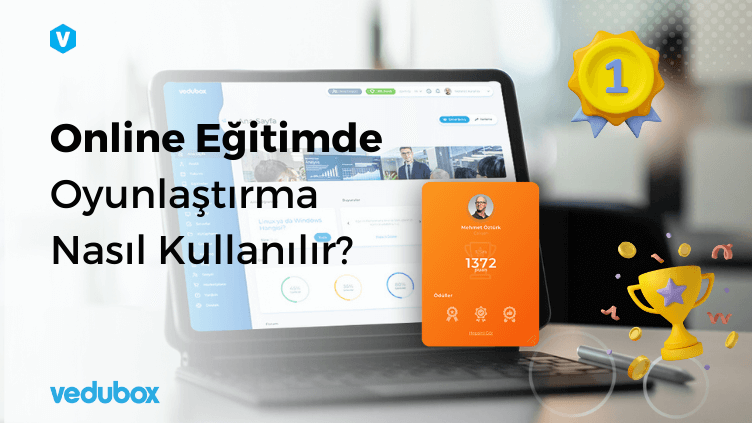Flipped learning makes class time more entertaining, efficient, and interactive. In addition, this model increases student engagement and success by encouraging group study.
According to a survey, 75% of students claim that flipped learning models would help them learn better. Not only students, %99 of surveyed instructors who tried flipped teaching also stated that they would continue flipping the classes next year. Evidently, flipped teaching models are increasingly coming to our agendas for a better learning experience.
Before exploring how you might practice this model, let’s learn what flipped learning is.
What is Flipped learning?
Flipping the class implies reversing the traditional model of education aka “lecturing”. Here, teachers are not active givers and students, not passive takers.
We can say that the role of teacher and students are flipping to create a more engaging and mind-opening learning process. Teachers are adopting a role to provide useful material and to facilitate the discussions so that students can go deeper in the topic.
Here is how flipped learning looks like: Students study lecture materials outside of class time and engage in discussions during class. This way, both students and instructors might use class time more to discuss, play, and learn together. Similarly, flipped learning is a teaching style that encourages instructors to spend more time and effort on interactive learning.
Besides, there are also four principles this model requires:
- Flexible learning environment: This model gives students more freedom regarding space and time. The physical arrangement of class or the time students spend on a given topic might vary according to their needs and abilities.
- Learner-centered: Compared to the traditional model that recognizes instructors as the sole provider of knowledge, this model encourages every student to participate in discussions and share personal opinions.
- Intentional Syllabus: Instructors continuously improve their syllabus and teaching methods to ensure the best learning experience for every student. A personalized learning process and individual attention from instructors help students progress quicker.
- Professional Instructors: The primary purpose of every professional instructor should be to help students in ways that enable them to continue flipped learning. Giving evaluations and encouraging feedback, practicing new methods, or communication among professionals would help them achieve that.
Why should you incorporate flipped learning into your education?
Flipped learning model:
- Introduces students to new technologies and digital tools.
- Increases student engagement.
- Reduces distractions.
- Drives more motivation.
- Encourages collaboration and group work.
- Provides instructors more time to give special attention and feedback in person.
- Builds a flexible and understanding learning space.
- Promotes effective homework and assignments.
- Improves students’ social and communication skills.
- Provides a more inclusive approach towards students with special needs.
- Acknowledges different needs and abilities.
How to practice flipped learning?
Now that you know what flipped learning is and the benefits of utilizing this model, you might question how to incorporate this technique into your education.
Organize the learning material
The first thing to do while organizing a flipped learning experience is decide on the materials you’ll provide to your students. You can create video lessons, PDF and MS Word documents, presentations, online tests and quizzes and more.
Now technology allows us to be creative in education. Build a rich syllabus that includes videos, presentations, and assignments. Be creative and bold.
You can also support your students’ improvement by adding short videos to include microlearning to the process. Short and easy-to-digest videos will make it easier to grasp complex concepts. Each video should explain just one piece of broader subjects. When students learn these before class time, they will have more time to understand the general concept.
Choose the digital tools
Then, choose the digital tools you will use while creating your content. For videos, you can record your screen, create 2D and 3D animations, or just record yourself. You can embed questions in the videos to make them more interactive. Once our materials are done, figure out the proper platform to share your materials with your students online.
For example, you may utilize an online education platform like Vedubox for a complete experience or a video application like Vimeo combined with Google Docs. However, the second option may be a bit confusing to follow for your students.
Decide on who will access to your videos and when. Do you allow everyone to see those or just some of the students? You can also set an order to consume the videos. For example, before completing the basics, they cannot start the videos in the second level.
Keep an eye on the progress
Next, you need to follow their progress and know whether or not they watch these videos. For this, you might plan quizzes including multiple-choice or fill-in-the-blank questions the next day. Or you can say “the word of the video” in each content and ask them later at school what it was.
The following and never-ending step is to get feedback and suggestions from students. The fundamental purpose of flipped learning is to boost student engagement. Therefore listening to their needs and demands is a must.
Useful Tips:
- At most, 5-minute videos are preferable.
- More than three assignments for a night might compel students, thus decreasing success and motivation.
- Implement games into homework for a more entertaining learning experience.
To learn how to make educational videos, read further.
Flipped teaching model attracts more and more instructors and students. Therefore, flipped learning is a must to establish a more engaging and fun classroom. Contact us to learn how to improve your online classes with Vedubox.








